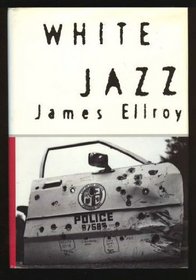Similar to a hard-boiled Mickey Spillane novel, this takes place in Las Angles in the late 50s, when the cops were corrupt, the Mob had their fingers into everything - murders, beatings, bribery, scams, shakedowns - all of that is in this novel. If you like noir movies, yu'll like this book.
Good story
From Publishers Weekly
Blacker than noir, this latest novel from the author of L.A. Confidential and The Black Dahlia is set in 1958 and features a dirty LAPD detective with a breathtaking mastery of corruption. Dave Klein, a gangland heavy, USC law grad and police lieutenant, can thread a legal loophole as easily as he slips on brass knuckles. Assigned by the police commissioner to head an investigation into a narc squad payoff source, Klein smells a setup. To save himself, he traces a genealogy of double-dealing that includes incest, institutionalized bribery and police corruption, all going back decades. Ellroy's telegraphic style, which reduces masses of plot information to quick-study shorthand, captures the seamy stream-of-consciousness of this tainted cop and carries the reader from initial repulsion to a fascination that lingers long after the story's last notes have faded away. Ellroy adroitly transfers the manic energy of scat and bebop to this final volume of his tense, lowdown L.A. epic. Moreover, he demonstrates perfect pitch for illegalese, but the hepcat banter never obscures the complex plotting of politics and pre-Miranda rights police work, a combination that here makes most other crime novels seem naive.
Blacker than noir, this latest novel from the author of L.A. Confidential and The Black Dahlia is set in 1958 and features a dirty LAPD detective with a breathtaking mastery of corruption. Dave Klein, a gangland heavy, USC law grad and police lieutenant, can thread a legal loophole as easily as he slips on brass knuckles. Assigned by the police commissioner to head an investigation into a narc squad payoff source, Klein smells a setup. To save himself, he traces a genealogy of double-dealing that includes incest, institutionalized bribery and police corruption, all going back decades. Ellroy's telegraphic style, which reduces masses of plot information to quick-study shorthand, captures the seamy stream-of-consciousness of this tainted cop and carries the reader from initial repulsion to a fascination that lingers long after the story's last notes have faded away. Ellroy adroitly transfers the manic energy of scat and bebop to this final volume of his tense, lowdown L.A. epic. Moreover, he demonstrates perfect pitch for illegalese, but the hepcat banter never obscures the complex plotting of politics and pre-Miranda rights police work, a combination that here makes most other crime novels seem naive.




